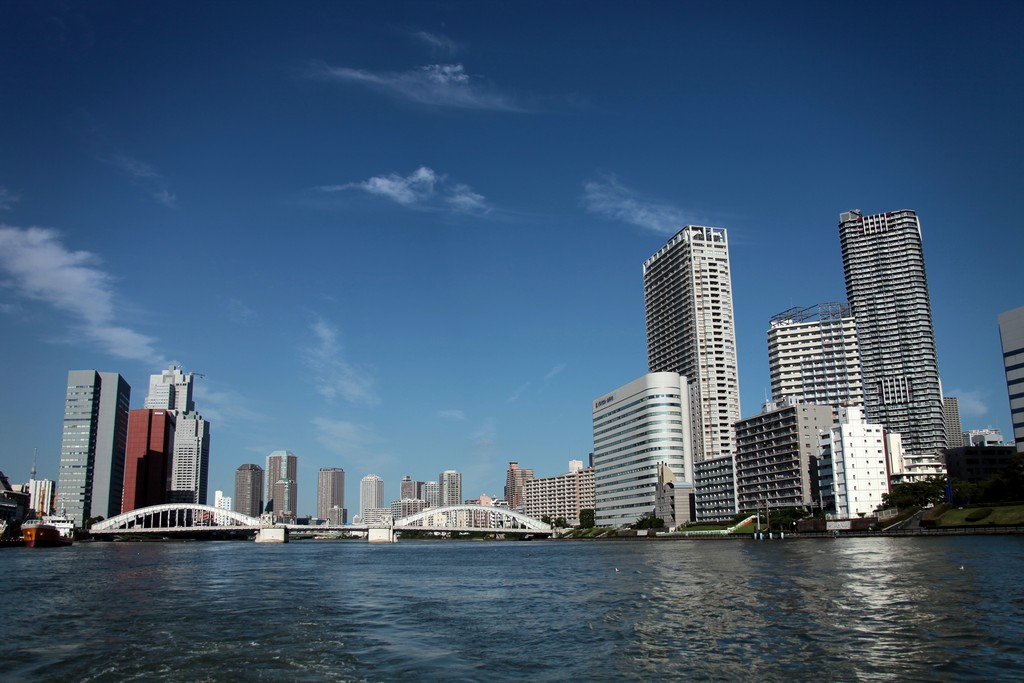KACHIDOKI BRIDGE TOKYO BAY
Le pont Kachidoki (勝鬨橋) date de 1940. Il est classé propriété culturelle importante au Japon. C'est un pont en acier avec tablier suspendu. La travée centrale est un pont basculant. Il a une longeur de 246 m.
La Sumida (隅田川, sumidagawa) est un fleuve qui passe dans Tokyo dont un des arrondissements porte le nom : Sumida-ku. Le fleuve débouche dans la baie de Tokyo.
La Sumida (隅田川, sumidagawa) est un fleuve qui passe dans Tokyo dont un des arrondissements porte le nom : Sumida-ku. Le fleuve débouche dans la baie de Tokyo.
Elle est connue pour avoir été contrôlée par les rebelles Shina pendant plusieurs décennies, avant que le maître d'armes Sakachi les fasse fuir, sous le commandement du shogun Minamoto no Yoritomo. La Tokyo Skytree se situe au bord du fleuve.
---------------------------------------------
The Kachidoki Bridge was constructed in 1940 for the commemoration of the victory of the Japanese army at Lushun during the Russo-Japanese War. This bridge is the only drawbridge on the Sumida, and has not been raised since 1970.
The Sumida River (隅田川 Sumida-gawa) is a river which flows through Tokyo, Japan. It branches from the Arakawa River at Iwabuchi and flows into Tokyo Bay. Its tributaries include the Kanda and Shakujii rivers. What is now known as the "Sumida River" was previously the path of the Ara-kawa, however towards the end of the Meiji era work was carried out to divert the main flow of the Ara-kawa to prevent flooding.
The Kachidoki Bridge was constructed in 1940 for the commemoration of the victory of the Japanese army at Lushun during the Russo-Japanese War. This bridge is the only drawbridge on the Sumida, and has not been raised since 1970.
The Sumida River (隅田川 Sumida-gawa) is a river which flows through Tokyo, Japan. It branches from the Arakawa River at Iwabuchi and flows into Tokyo Bay. Its tributaries include the Kanda and Shakujii rivers. What is now known as the "Sumida River" was previously the path of the Ara-kawa, however towards the end of the Meiji era work was carried out to divert the main flow of the Ara-kawa to prevent flooding.
